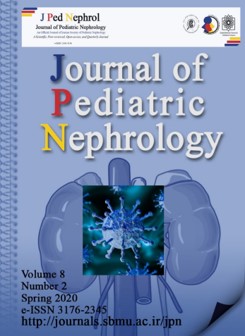Utilizing Telemedicine for Managing COVID-19
Journal of Pediatric Nephrology,
Vol. 8 No. 2 (2020),
2 Khordad 2020,
Page 1-3
https://doi.org/10.22037/jpn.v8i2.30046
Telemedicine which is defined as the provision of healthcare services by a physician at a distance, is a method that provides it in many general and specialized field of medicine even in rural areas. COVID-19 is a singular disorder with an incompletely defined medical course, mainly for youngsters and susceptible populations. In 5% of COVID-19, severe diseases which needs intensive care unit has been reported. As it spreads rapidly and regarding it contagious feature even by healthcare facilities, new models of care are needed to decreases the probability of face-to-face contact between patients and caregivers. The integration of eHealth for patients with COVID-19 is indicated as a global emergency to reduce virus transmission.
Keywords: COVID-19; Telemedicine; Nephrology; Management.

